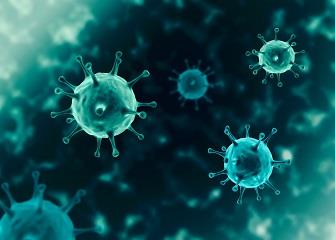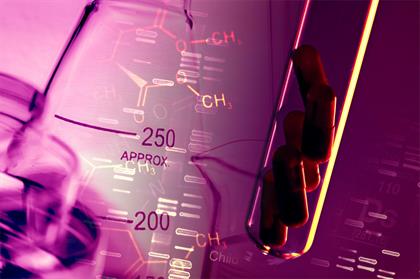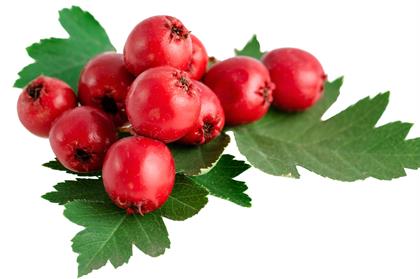
Biotechnological Synthesis
Large-scale production of paclitaxel using biotechnological methods involves cultivating and selecting strains capable of producing large quantities of paclitaxel. This is achieved by continuously expanding and cultivating these strains in a culture medium, allowing “unrestricted” production of paclitaxel without the need to further deplete the scarce natural resource of Taxus trees.
Obtaining relevant genes from the bark of Taxus trees: Scientists need to isolate and clone genes from the bark of Taxus trees that are capable of synthesizing paclitaxel.
Creating paclitaxel synthesis pathways in the laboratory: Once these genes are obtained, scientists must create one or more synthesis pathways in the laboratory, using these genes as a foundation. Other microorganisms or plants are used as “factories” to produce paclitaxel.
Validation and optimization: After successfully creating paclitaxel synthesis pathways, scientists need to validate and optimize them to ensure efficient paclitaxel production. Economic feasibility is also considered during this process.
Industrial production: Once the validation and optimization process is complete, large-scale production of paclitaxel can commence. This may involve establishing a dedicated biotechnological factory for this purpose.
Example: A strain named HQD33, with a considerable production yield of paclitaxel, has been isolated and screened from the bark of a hundred-year-old Taxus tree. Through various methods such as chemical and physical treatments, its gene structure has been mutated and optimized multiple times. Finally, using biotechnological methods, a high-yield strain capable of producing 448.52 micrograms of paclitaxel per liter of culture medium has been cultivated.
Mechanism of Action of Paclitaxel
The primary mechanism of action of paclitaxel involves inhibiting microtubule depolymerization, leading to the termination of mitosis in tumor cells and ultimately causing their death. Paclitaxel is the only secondary metabolite from plants that promotes microtubule formation while inhibiting microtubule protein depolymerization. Microtubules are essential components of eukaryotic cells, forming a cytoskeletal framework that maintains cell shape, participates in cell contraction for movement, and facilitates the movement of organelles and intracellular substances. Microtubules are particularly crucial for the division and movement of chromosomes during mitosis.
Under normal conditions, there is a dynamic equilibrium between microtubules and microtubule protein dimers. Microtubules depolymerize under the influence of calcium ions, forming spindles and spindle fibers during mitosis, pulling chromosomes toward opposite poles. Paclitaxel selectively and reversibly binds to microtubules, inducing and promoting the polymerization of microtubule proteins. This stabilizes microtubules, prevents depolymerization leading to chromosome breakage, and inhibits cell replication and migration, thereby impeding the replication of tumor cells.
In addition, researchers suggest that paclitaxel has a significant cell cycle-independent effect, similar to bacterial lipopolysaccharide (LPS), activating mouse macrophages to kill tumors. Studies have shown that paclitaxel can also regulate immune function in the body. Therefore, the anticancer effect of paclitaxel may result from various actions or interactions.
Extraction Process of Paclitaxel
Paclitaxel is a natural compound with significant medicinal value, widely used in the treatment of breast cancer, ovarian cancer, and other cancers. To extract paclitaxel from plants, a series of steps, including extraction, separation, purification, and detection, are required. The main steps in the extraction process of paclitaxel are as follows:
(1) Extraction
Extraction is the first step in the paclitaxel extraction process. Typically, high-paclitaxel-containing plants are soaked or refluxed in organic solvents such as methanol, ethanol, or acetone. Factors such as temperature, time, and solvent concentration need to be carefully controlled to maximize paclitaxel extraction.
(2) Separation
The extraction solution contains various compounds, including paclitaxel and related compounds. Various separation techniques, such as silica gel chromatography, alumina chromatography, and dextran gel chromatography, are used to separate paclitaxel from other compounds. These methods take advantage of the differences in polarity and molecular weight between paclitaxel and other compounds.
(3) Purification
Purification is a crucial step in the paclitaxel extraction process, aiming to increase the purity and yield of paclitaxel. Common purification methods include crystallization, recrystallization, and high-performance liquid chromatography (HPLC). Crystallization and recrystallization remove impurities and enhance the purity of paclitaxel, while HPLC further purifies paclitaxel.
(4) Detection
Detection is a crucial aspect to ensure the quality of paclitaxel. Testing the extraction solution, separation solution, and purified solution allows determination of paclitaxel content, purity, and yield. Common detection methods include HPLC and UV-visible spectrophotometry. These methods enable qualitative and quantitative analysis based on the structure and properties of paclitaxel.
Applications in the Pharmaceutical Industry
Paclitaxel is a natural anticancer drug that selectively regulates microtubule proteins, thereby inhibiting the abnormal division and proliferation of tumor cells. Due to its unique chemical structure and significant biological activity, paclitaxel has become an important target in the development of anticancer drugs. Currently, paclitaxel is widely used in the treatment of breast cancer, ovarian cancer, some head and neck cancers, and lung cancer. Its novel and complex chemical structure, extensive and significant biological activity, unique mechanism of action, and scarce natural resources have garnered immense favor among botanists, chemists, pharmacologists, and molecular biologists.
Leave a Reply
Related Products
You Might Like Also

Lipids Used in COVID-19 mRNA Vaccines
The COVID-19 pandemic has killed millions of people. Vaccines certainly are the most outstanding ways to prevent major diseases and death, though they haven't eliminated infections. At present, the most effective vaccine is the mRNA vaccine developed by Pfizer-BioNTech and Moderna. Before that, mRNA technology stopped in the lab phase. Read More

Fermented Raw Material for Cosmetic Skincare Product
The cosmetics and skincare industry is constantly evolving and a recent trend that has emerged is the use of fermented ingredients in skincare products. Fermentation is a microbial metabolic process that has been used for centuries in food and beverage production, and now it has been extended to the cosmetic industry. Read More

Hypoglycemic Functional Factors in Natural Products and Their Mechanisms of Action
Diabetes is a common clinical disease, and with the improvement of living standards, an increase in the number of obese people, and the intensification of aging populations, the incidence of diabetes is increasing year by year. Read More

Nanobodies Definition, Structure, Advantages and Applications
Nanobodies are the smallest functional single-domain antibodies known to be able to stably bind to antigens, and have unique structural and functional advantages. The molecular weight of nanobodies is only 12-15 kDa, which retains the antigen binding ability of traditional antibodies. However, nanobodies have higher solubility and stability, and have unique advantages in biological function and biochemical characteristics. Therefore, nanobodies have shown good control effects in disease diagnosis, cancer and infectious diseases. Read More

New Technology to Promote Drug Development-AI Technology
For a long time, the research and development of each new drug has faced the challenges of high cost and long cycle. In response to these challenges, major pharmaceutical companies have shifted from targeting common diseases to developing drugs for specific diseases. At the same time, these companies are constantly looking for new technologies for new drug development, such as high-throughput screening technology, DNA encoded chemical library, computer-aided drug discovery, and artificial intelligence. Read More

Liposomes in Anti-tumour Drug Carriers
Chemotherapy with anti-tumor agents is currently one of the most important systemic treatments for cancer. However, direct treatment with drugs lacks specificity and sensitivity and tends to attack normal cells indiscriminately, resulting in side effects. Liposomes, as drug carriers, provide a superior solution for maintaining or enhancing the efficacy of chemotherapy while reducing the severity of reactions and side effects. Read More










